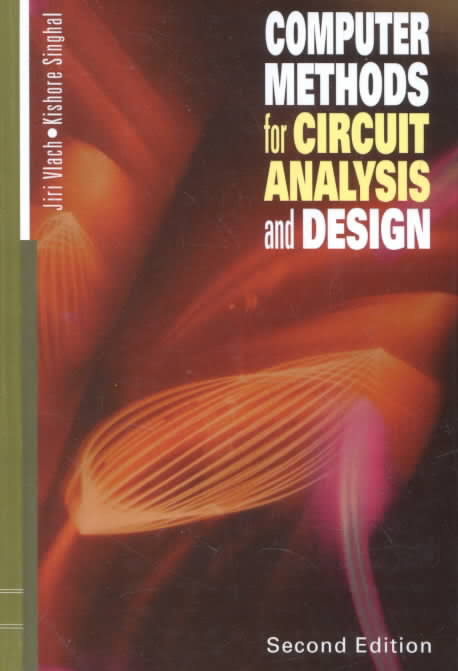Computer Methods in Circuit Analysis and Design: A Comprehensive Overview
Introduction
Computer-aided design (CAD) tools have revolutionized the field of electrical engineering, particularly in circuit analysis and design. These tools provide engineers with powerful capabilities to analyze complex circuits, simulate their behavior, and optimize their performance. This white paper explores the fundamental concepts, techniques, and software tools used in computer-aided circuit analysis and design.
Fundamental Concepts
- Circuit Analysis: The process of determining the voltages and currents at various points in a circuit.
- Kirchhoff's Laws: Fundamental laws used to analyze circuits.
- Node Voltage Analysis: A method for solving circuit equations by analyzing node voltages.
- Mesh Current Analysis: A method for solving circuit equations by analyzing mesh currents.
- Circuit Simulation: The process of modeling and analyzing the behavior of a circuit using computer software.
- SPICE: A widely used simulation program with a variety of analysis capabilities.
- Time-Domain Simulation: Simulates circuit behavior over time.
- Frequency-Domain Simulation: Analyzes circuit behavior at different frequencies.
- Circuit Design: The process of creating circuits to meet specific requirements.
- Schematic Capture: The process of creating a schematic diagram of a circuit.
- PCB Layout: The process of arranging components and routing wires on a printed circuit board.
Software Tools
- SPICE-Based Simulators:
- LTspice: A free, powerful, and easy-to-use SPICE simulator.
- PSpice: A commercial SPICE simulator with advanced features.
- Circuit Design Software:
- Altium Designer: A comprehensive EDA tool for PCB design and simulation.
- OrCAD: A popular EDA tool for circuit design and simulation.
- MATLAB: A powerful mathematical computing environment for circuit analysis and simulation.
- Python with Libraries: Python libraries like NumPy, SciPy, and SymPy can be used for circuit analysis and simulation.
Applications
- Analog Circuit Design: Amplification, filtering, and signal conditioning.
- Digital Circuit Design: Logic gates, flip-flops, and digital systems.
- Power Electronics: Power converters, inverters, and rectifiers.
- RF and Microwave Circuit Design: Antennas, filters, and amplifiers.
Future Trends
- Artificial Intelligence and Machine Learning: AI and ML techniques can be used to automate circuit design and optimization.
- Cloud-Based EDA Tools: Cloud-based tools enable remote access and collaboration.
- Internet of Things (IoT): Design and analysis of IoT circuits and systems.
- Emerging Technologies: Exploring new technologies like quantum computing and neuromorphic computing for circuit design.
Conclusion
Computer-aided circuit analysis and design have become essential tools for modern electrical engineers. By mastering these tools and techniques, engineers can design and analyze complex circuits efficiently and accurately. As technology continues to advance, the role of computer-aided tools will become even more critical in shaping the future of electronics.
References:
- Microelectronic Circuits by Sedra and Smith
- Fundamentals of Electric Circuits by Alexander and Sadiku
- The Art of Electronics by Horowitz and Hill
- Altium Designer Documentation: https://www.mathworks.com/products/matlab.html
- Python:
By leveraging the power of computer-aided tools and a solid understanding of fundamental principles, engineers can design innovative and efficient electronic circuits.



